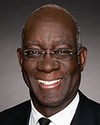Thank you, Mr. Chair.
Good evening to everyone. I'd like to thank the committee for having invited me.
I'd like to begin by pointing out that I'm appearing here as an individual, a scientist, a demographer and a citizen who is concerned about the future of the French language.
My comments will address the first part of the study's mandate, which is to paint an objective and detailed picture of the state of French and English in Quebec. I will therefore briefly present the outcome of my research work on the demographic future of the French language in Canada.
However, before beginning, I would like to inform the committee that the correspondence I received calling the witnesses contains some French mistakes and several examples of what Gaston Miron called "traduidu," or "translated from," which is to say sentences that look like French, but that can only be understood properly by reading the English version.
I'm not pointing this out because I'm a language purist. You'll never see me out marching on behalf of proper French or abolishing the Radio Radio group. However, the federal government, owing to its institutional status and its claims with respect to bilingualism, needs to set a proper example, particularly when dealing with the Standing Committee on Official Languages.
A living language is one that looks at reality without any filters that might be imposed by another language. If French is nothing more than a translation language, and if it can only truly remain alive within the federal government, how can the government have the moral authority to defend the cause of the French language across Canada?
As Professor Charles Castonguay has already demonstrated, French is declining in Quebec and Canada, and has been for quite a while.
The decline has been accelerating in Quebec since the early 2000s. In my brief address, I would like to place an emphasis on the causes of this decline and on future prospects.
First of all, when we speak of decline, we're talking about a reduction in the demographic weight of francophones compared to other language groups. As the comparative weight of French diminishes, the less competitive it becomes, demographically speaking, by which I mean that there will be fewer people speaking French, lower demand for services in French, fewer opportunities to work in French, fewer immigrants who have the opportunity or the desire to live alongside francophones, and other similar considerations.
In Canada, the main consideration is the relative weight of French compared to English, because these two languages are in competition with one another. The two languages are official throughout Canada, and the language choice is left up to each individual. This is called the personality principle.
There are other forms of linguistic organization that limit such competition. In Switzerland, for example, the place of residence determines what languages are used. This is called a territoriality principle. Competition between languages is limited to certain zones that are designated bilingual.
Let's move on to the decline of French and the demographic system. Demography, basically, is a rather simple discipline. In order to determine how a population is evolving, we need to know what comes in and what goes out. An inflow might be an immigrant or a birth, and an outflow might be a death or an emigrant, which means someone moving out of their region.
When we speak about a language group in demolinguistics, it can also mean entering or leaving a population by changing the language used. It's a bit like moving, but it means moving from one language to another. We call this language substitution.
To anticipate the future, we must begin by understanding the demographic system that has historically determined the language dynamics in Canada. With only seven minutes, all I can do is give a rough approximation, for which I apologize in advance.
Let's go back a bit.
Early in the 20th century, before the Second World War, the baby boom among francophones was called, rightly or not, “the revenge of the cradle”. This advantage was offset by an exodus of francophones to the United States and by cyclical, and heavily anglophone, European and British immigration, particularly outside Quebec.
The baby boom was followed by a baby bust, meaning that fertility dropped rapidly, and this definitively counterbalanced the francophone birth rate. However, the significant exodus of anglophones from Quebec that began in the 1970s contributed to maintaining the demographic weight of French. This was the period of the referendums, which continued until the mid-1990s.
As of the 1990s, immigration rates began to increase dramatically and have remained among the highest levels in the world, at approximately twice the level for the United States. Immigration is becoming less European and increasingly diversified. During this period, the fertility rate among Canadians and Quebeckers has remained well below the replacement level. Anglophones continued to move, but not to the same extent as during the referendum years. Fewer of them were leaving Quebec. As a consequence, the decline of French has been accelerating, as demonstrated by Mr. Castonguay.
The table has been set for the future. Over the coming decades, there will be a low birth rate and upward pressure on immigration thresholds. In Canada outside Quebec, the linguistic assimilation of francophones will likely continue.
Because the fertility rate for francophones is very close to the rate for anglophones, potential for growth in both groups will basically come from immigration.
To maintain the language balance, French will have to be able to recruit immigrants whose language matches its demographic weight in terms of Canada's official languages, which is approximately 90% in Quebec.
Language substitutions are distributed approximately equally. In Canada outside Quebec, all substitutions are to English, but in Quebec, they are approximately equal.
If this proportion has increased over the past few decades, it's largely due to an increase in francophone immigration. The status and appeal of French in Quebec have made little headway, and language substitutions towards French have been levelling out. The lower appeal of French in Quebec has thus been concealed by two phenomena, the strong propensity of anglophones to leave Quebec, which increased the weight of francophones, and the selection of French-speaking immigrants from abroad, which gave the impression that these immigrants were learning French locally. The impact of both of these phenomena will tend to diminish.
With due regard to all these factors, we can project that French will decline just about everywhere in Canada and Quebec in the short and medium term. There is no point to burying yourself under a mountain of numbers. I'll mention just two important facts derived from my doctoral work. First of all, outside Quebec, French is declining both relatively and absolutely. The demographic weight of francophones will diminish and there will be fewer and fewer francophones. The decline is essentially the outcome of demographic aging and linguistic assimilation.
In Quebec, the decline of French is relative, which is to say that the demographic weight of French is diminishing compared to English. Overall, there is anglicization and linguistic polarization in Canada. Anglicization is occurring because French has lost ground just about everywhere, and polarization because francophones will become increasingly concentrated in Quebec, outside the Montreal census metropolitan area.
It's also important to give consideration to the fact that the changes expected at the federal and provincial levels are hiding local changes that are even more significant. For example, the Montreal suburbs have been mutating for 10 or 15 years now, and this mutation—





